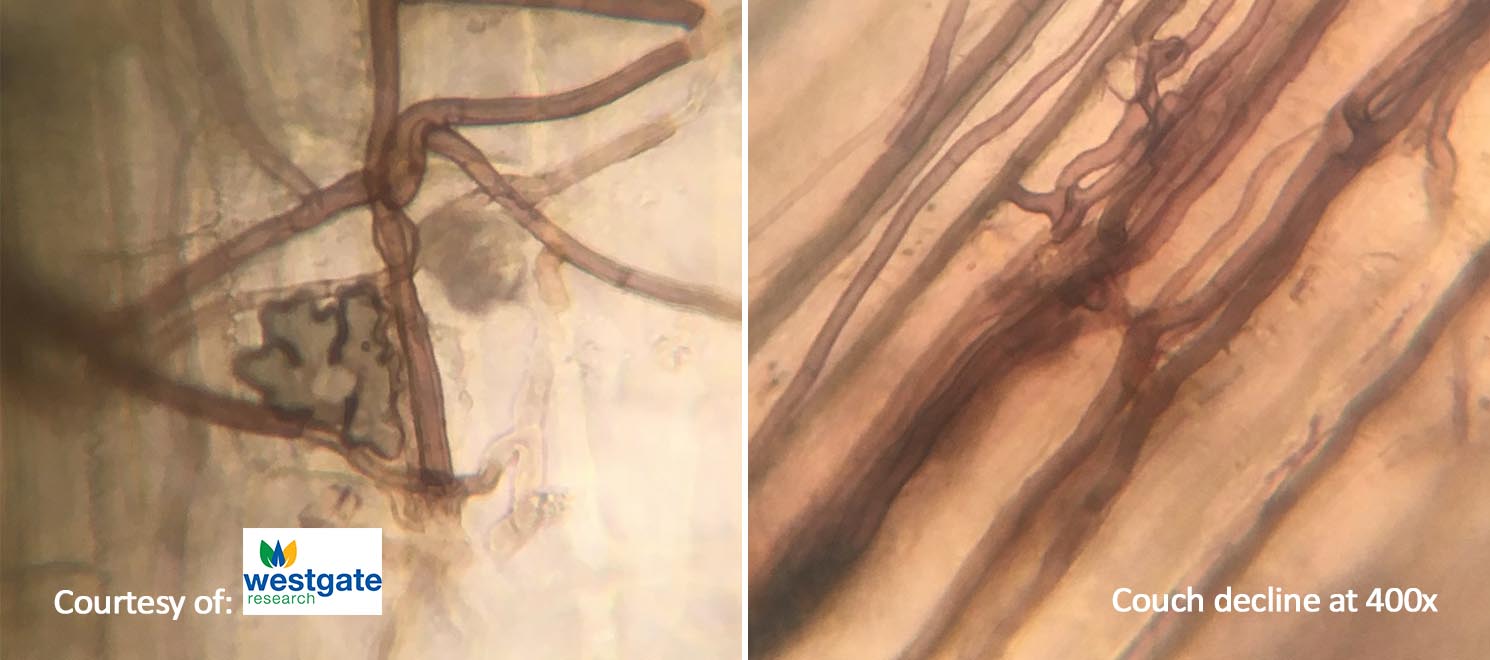Other common names:
ERI, bermudagrass decline, couch decline.
Symptoms:
- Commonly seen in spring through to early autumn when the weather is hot and humid.
- Irregular chlorotic or straw coloured patches up to 1 metre in diameter.
- Infected turfgrass sees the lower/older leaves become chlorotic and die.
- Dark brown roots and dieback.
- Dark runner hyphae may also be present on the roots and stolons and lobed hyphopodia may be seen in the roots and stolons (Stirling, 2002).
- The disease can be exacerbated by unfavourable growing conditions like low light and poor drainage.
Susceptible Turf:
Cynodon spp. Including green couch, hybrid bermudagrass and hybrid green couch.
Control options:
- Pesticides: See available tabs below for registered products. Use as per label instructions.
- Integrated Pest Management (IPM): Use a combination of approaches listed on this page.
- Cultural: Providing favourable growing conditions for the turfgrass. Increase mowing height, improve drainage and reduce thatch levels. Reduce the amount of nitrogen fertiliser being applied to the turfgrass.
- Mechanical: Aeration practices.
References:
Stirling, M. (2002) Ectotrophic root-infecting fungi on golf course turf in Queensland, Horticulture Australia Final Report TUO0005, Sydney, pp. 29.
Disclaimer:
Turf Finder or its developer accepts with no responsibility for any consequences whatsoever resulting from the use of any information or product(s) listed herein. Products are to be applied as per label instructions.
